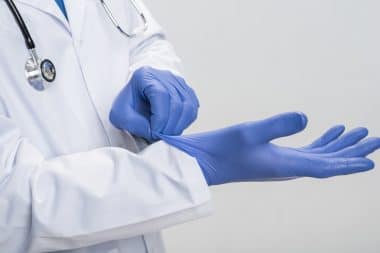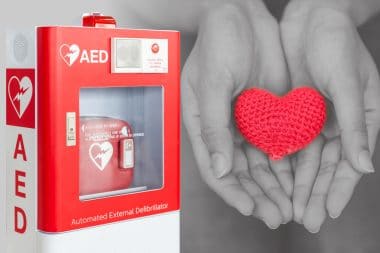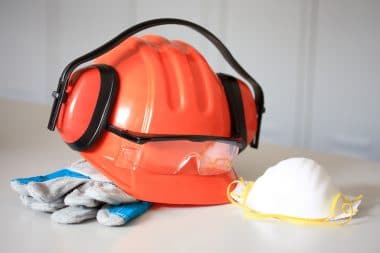While everyone is aware that health and safety are major concerns nowadays, most people still don’t take the appropriate steps to ensure their own health and safety. Not shutting off the current when trying to make electrical repairs, unnecessarily crossing the street while on the road, and swimming in unprotected pools are only some examples of how people can be lenient or unaware of safety concerns around them. An individual may be taking a huge risk with their life each time they fail to follow the safety rules.
This is where health and safety education courses come into play. There are several benefits when taking these, not just to prevent accidents, but also to promote safety and become aware of how to respond to accidents and emergencies.
Below is a closer look at the benefits of undertaking health and safety courses:
1. Be Knowledgeable with Emergency and Disaster Response
Health and safety courses are helpful when dealing with environmental emergencies like fire. For instance, it helps people understand how to extinguish fires, what safety equipment to use, and what procedures to follow. Throughout the training, one learns what to do in a fire-related emergency, whether it’s stopping a fire or containing one.
These courses are also applicable to natural disasters such as drought, earthquakes, storms, and flood, as it’s imperative for everyone to know how to react should a disaster strike. The right safety courses will not only teach you how to provide first aid, but also the necessary survival skills that will help lessen the impact of such disasters. This can be especially important to people located in disaster-prone areas as they’ll know what tools and items should be stocked in case of an emergency and how to use them.
2. Improved Situational Awareness
Aside from giving you knowledge on how to deal with emergencies, a course on health and safety also gives you the much-needed know-how to manage risk. Since instilling the proper cognitive tools and mindsets is essential in ensuring safety, a section of a risk-management program also covers situational awareness. It’s a significantly useful skill that every person should develop.
Situational awareness is the practice of being aware of how specific factors about an individual’s surroundings relate to one’s safety. Basically, it’s knowing what’s going on around you. It’s all about understanding the potential threat that people, vehicles, and time of day pose to you. People learn how to act when there’s a threat in more advanced situational awareness training besides anticipating threats.
3. Increased Understanding of Mental Health
Issues surrounding mental health are becoming increasingly common in different communities worldwide. They affect people of all abilities, genders, backgrounds, and ages. The best way to help people suffering from any form of mental health problem is to be aware of the problem and learn how it can manifest.
An excellent way to go about this is by attending a health and safety course, particularly one about mental health awareness. It will arm you with a set of skills and knowledge about mental health, ensuring that you’re well equipped to support the people around you.
A mental health awareness course provides people with a better understanding of how the different forms of mental health issues affect one’s life. By doing so, it can reduce the stigma around mental illness. People who have undertaken a health and safety program that tackles mental health also learn how to recognize the early signs and risks of mental health problems, giving them the confidence to help those who are suffering.
4. Obtain Basic First Aid Knowledge
People don’t often take health and safety education programs because they’re either too busy or think that accidents only happen to others and not to them or their family, friends, and colleagues.
However, ask any person who has taken one–particularly a course about first aid–if it was worth the time and money, and the answer that you’ll get is a big “yes!”
Having some basic knowledge about first aid helps save lives, reduces an individual’s recovery time, and prevents a patient from suffering a long-term disability. First aid training will also make a person comfortable and confident, therefore more in control and effective when needed, especially in emergencies.
5. Learn Basic Life Support
Basic life support (BLS) is a medical aid primarily provided to an individual during an emergency medical situation. It’s the medical care level used until paramedics can attend to the patient or victim professionally. Thus, BLS’s objective is to buy some valuable time for the emergency medical response professionals to arrive or be available, not to treat the patient. Basic life support can help individuals who are drowning, choking, or are suffering from a heart attack or cardiac arrest.
BLS is included in many health and safety courses, along with CPR (cardiopulmonary resuscitation).
6. Be Able To Help Someone Experiencing Anaphylaxis
Another essential health and safety training course is anaphylaxis first aid.
Anaphylaxis is an allergic reaction in its most severe form. Common causes of anaphylaxis are some medication, food, and insect stings. It can affect various body parts. Symptoms can include a rapid blood pressure drop and breathing difficulty. These symptoms appear suddenly, and patient survival is hugely dependent on fast action or emergency response.
A health and safety course focusing on the management and treatment of anaphylaxis explains how to recognize an acute hypersensitivity reaction, what to do, and how to administer medication to someone experiencing it.
Conclusion
Health and safety courses mainly revolve around dealing with emergencies, applying first aid, and basic life support, so most people believe that they only benefit industries that handle dangerous materials or have hazardous workplaces. The truth is that these courses can be applied anywhere and be taken by anyone as they also cover situational awareness, support for people suffering from mental health issues, help for someone who’s experiencing an acute allergic reaction, and natural disaster management. All of these are important in every setting within a society, which is why everyone should prioritize health and safety courses regardless of the nature of their job.








Reply